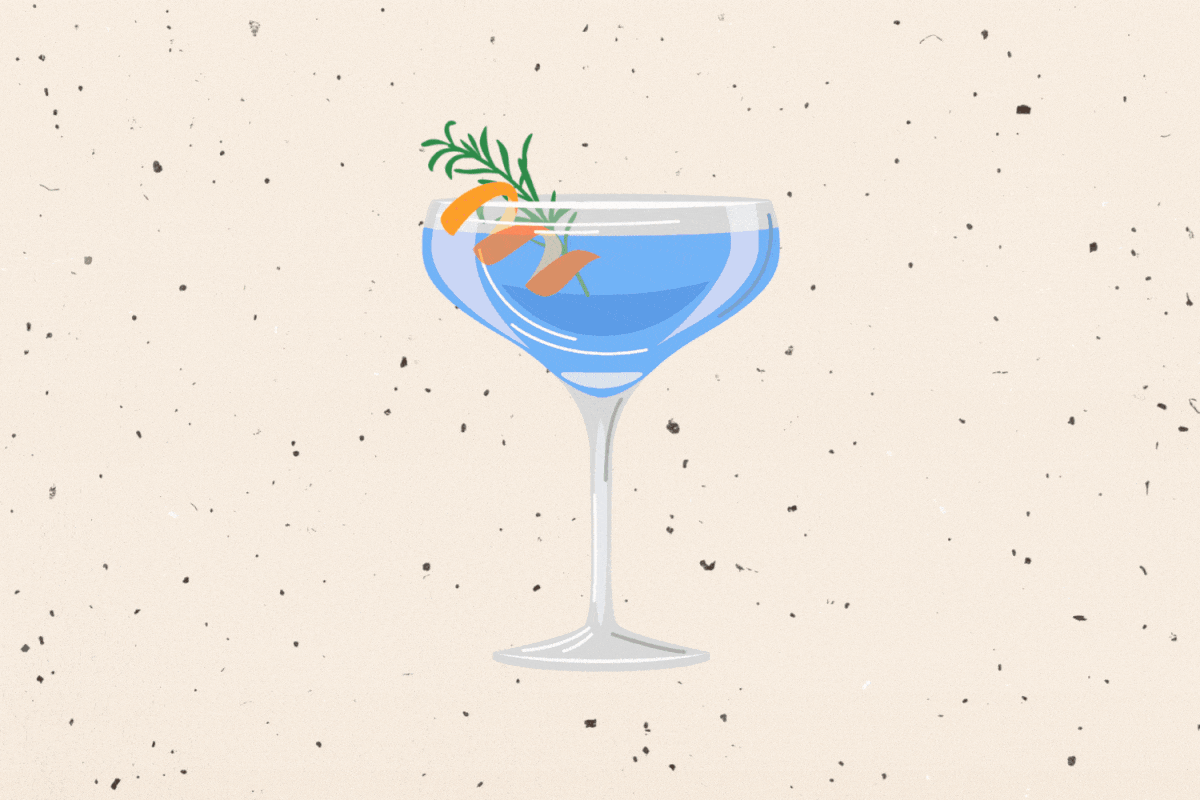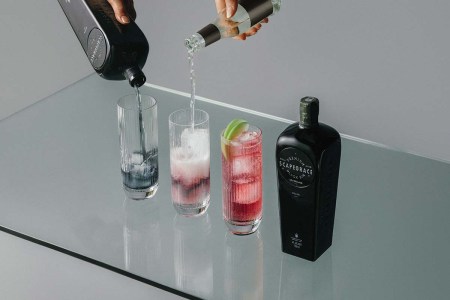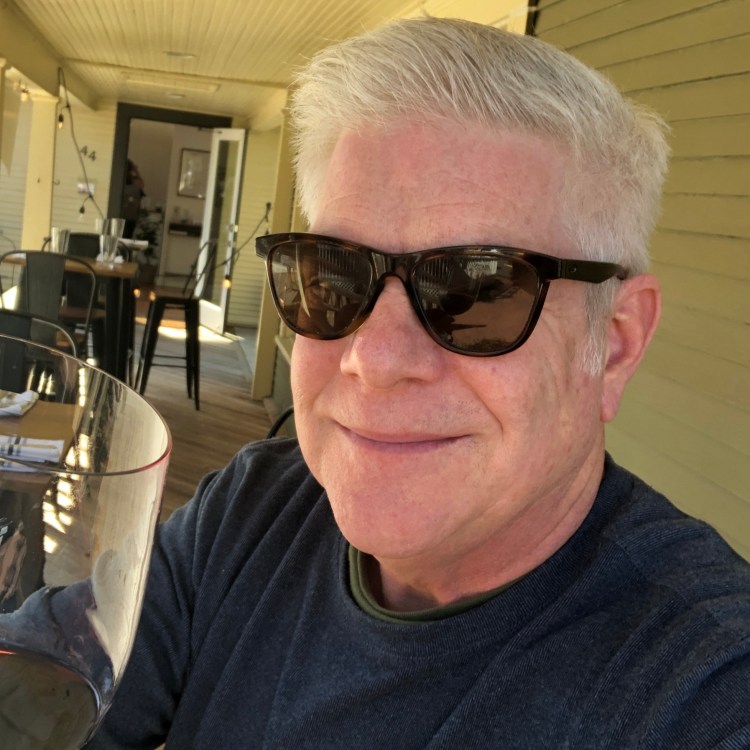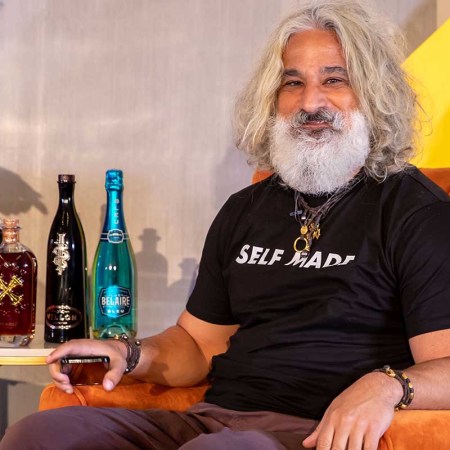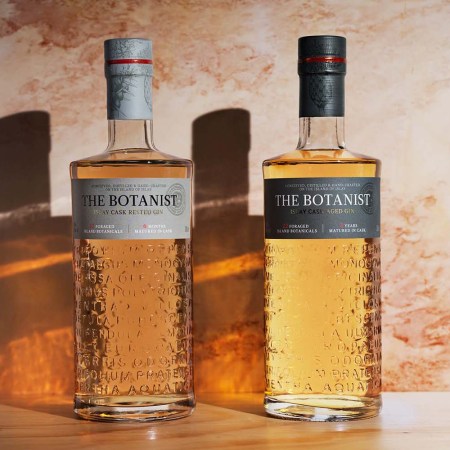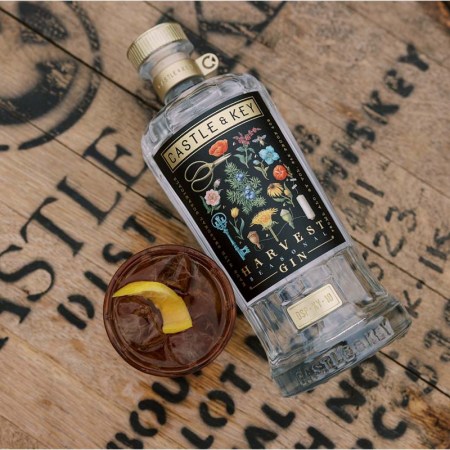Scroll through Instagram and TikTok, and you’ll find tons of results for color-changing spirits and cocktails, largely created through the addition of butterfly pea flower (BPF) in the form of teas or tinctures. This seemingly magic ingredient — petals from a plant long used in Asia as an herbal tea — dreamily shifts from a deep blue to pink or light purple with the addition of acid (usually lemon or lime juice). It’s a crowd-pleaser that works with any clear liquid without affecting the taste and started taking off in bars around 2016.
More recently, booze brands have cut out the middle-mixer by launching gins, tequilas and vodkas infused with butterfly pea flower. In 2017, Empress 1908 Indigo Gin out of British Columbia hit the market, followed closely by New Zealand’s Scapegrace Black Gin. Unfortunately, the FDA hadn’t yet approved BPF as a natural food coloring agent; that approval came in the fall of 2021, followed by a mini-deluge of now-legal color-shifting expressions.
And not all color-changing spirits started similarly. “I had a couple of key gins in mind, neither initially had butterfly pea flower as an ingredient,” says Melissa Katrincic of Conniption Gin. Durham Distillery in North Carolina launched the brand in 2015 with Navy Strength and American Dry expressions. Katrincic was looking for a signature gin (“a juicy finished gin that is surprising”) of her own design when the blue flower came to mind. “We’d seen BPF on the FDA’s research, but Covid slowed down approval,” she adds. “That was hard because we’d seen an import [Empress] already take the market share, and we couldn’t do anything about it.” When FDA approval came, Katrincic and her team jumped, and Conniption Kinship was on the market by spring 2022.
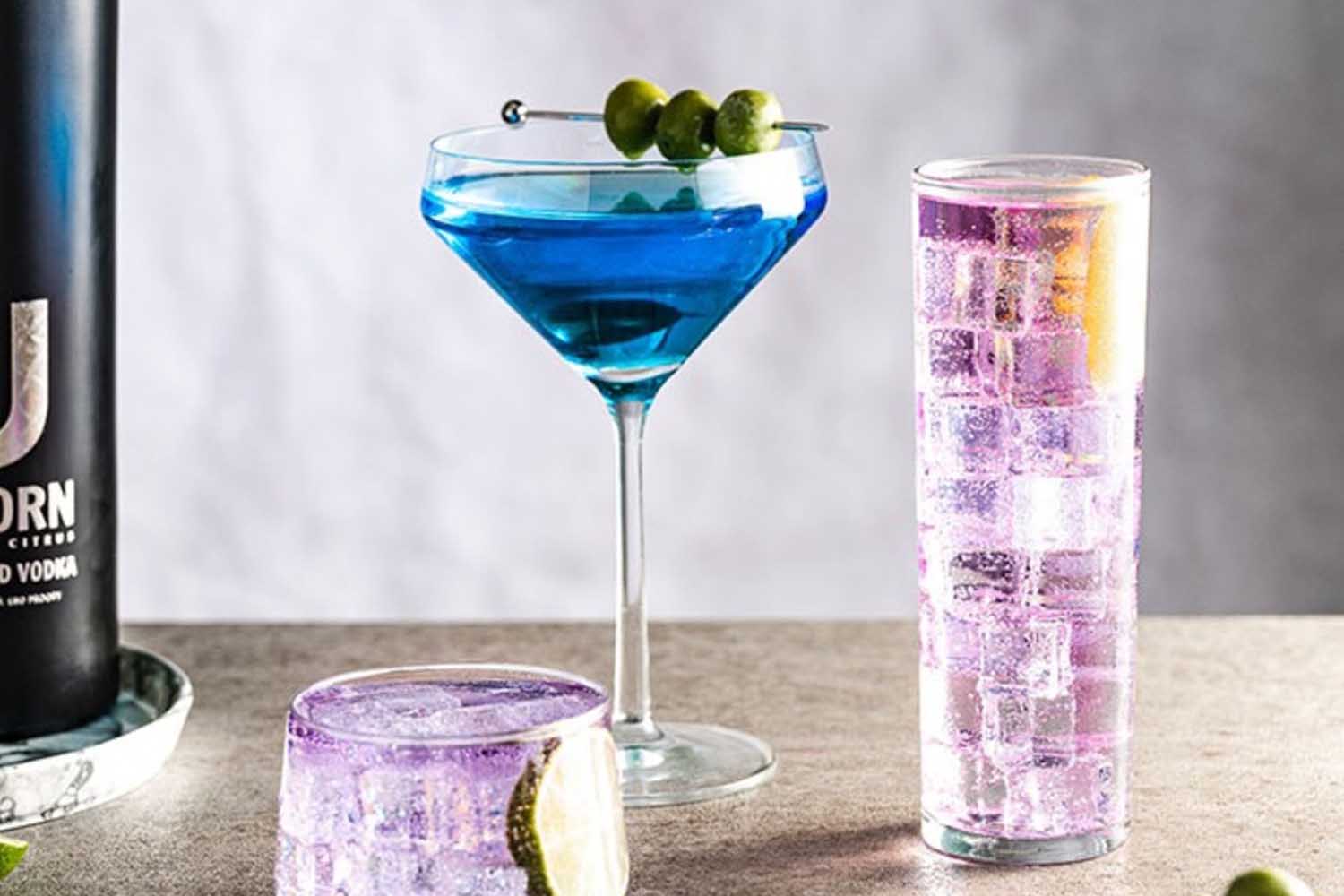
Rick Hewitt, founder and CEO of Seattle-based Unicorn Distillery, was also watching the FDA’s decision carefully but took a different tack. The tech-inspired brand aims to be known not for a specific spirit but for a portfolio of colorful BPF options, starting with tequila, vodka and rum soon to come. Before FDA approval, Hewitt crafted his first color-changing vodka called Twist in 2019. His first iteration of Unicorn dropped in early 2021. Each was labeled a “tea flavored vodka” because BPF wasn’t legal as a coloring, but any sort of tea “flavoring” (BPF, ironically, imparts almost no flavor) was fine. “It could be Earl Gray, it could be flowers — it didn’t matter,” Hewitt says. He launched the bright blue Unicorn Butterfly Pea Vodka and Tequila the moment the ink dried on FDA approval.
As the brand that started it all, Empress 1908 Indigo Gin Master Distiller Phil Lecours says his team was inspired in part by “the renowned afternoon tea program” at the Empress Fairmont Hotel in Victoria, British Columbia. “After tasting several tea blends, we settled on the extraordinary combination of Empress signature black tea and butterfly pea blossom, which we discovered in a blend called Blue Suede Shoes,” he says. The minimalist label design and deep purple liquid are now a familiar sight at bars and liquor stores.
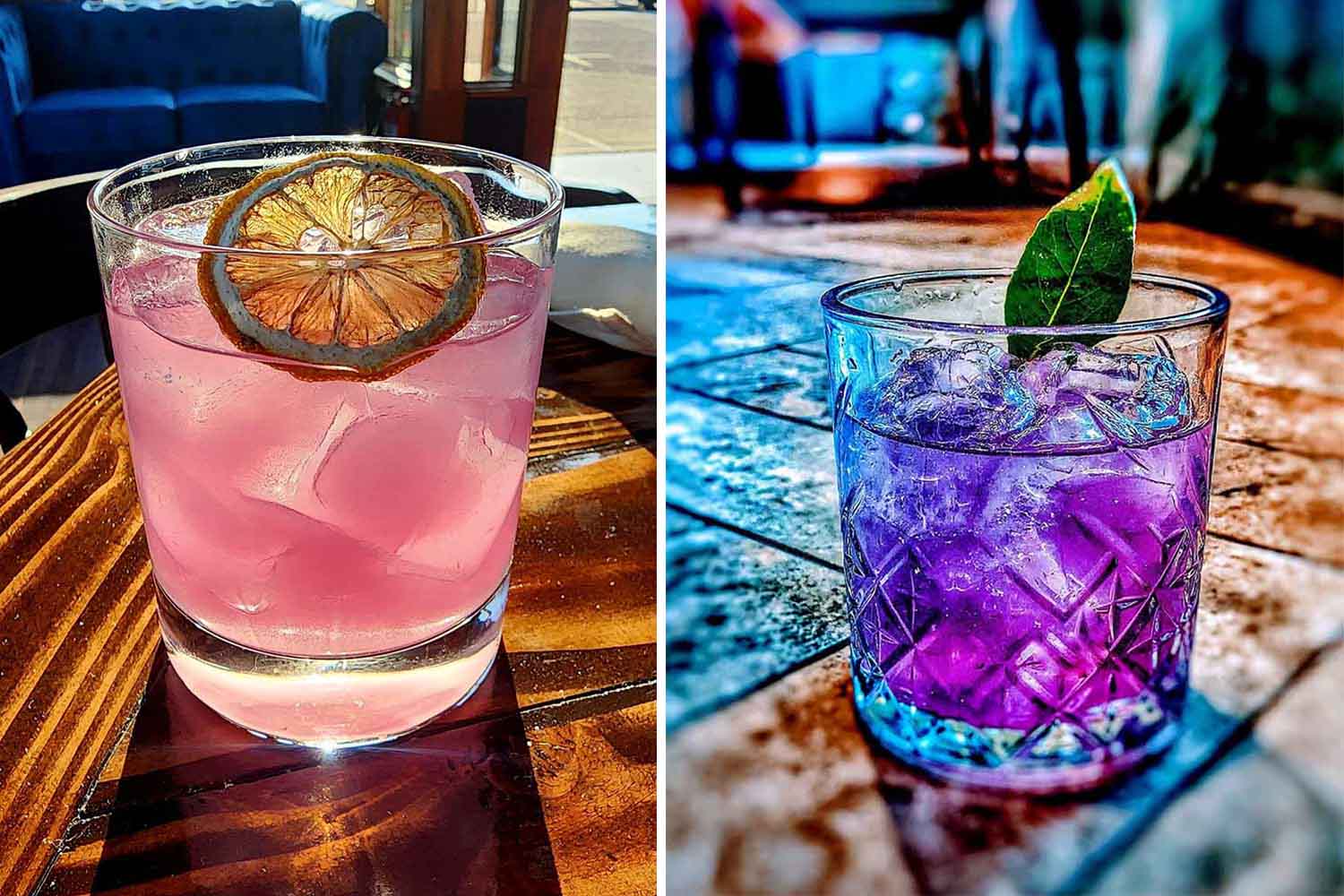
There are benefits to directly infusing a spirit with the pea flower. Teas are mostly water, and the extra dilution may change a cocktail’s balance. Tinctures are concentrates that can be difficult to control, even with a dropper. Besides, it looks cool as hell, and bars are hopping on board, creating cocktails with these bottles. At Bowery Road in Manhattan, sip on the Manic Monday from veteran bartender Paula Fidler Lukas. “I love that it’s unexpected, and it has a beautiful pop of color,” she says. The liqueur-forward drink features Scapegrace Black Gin, plum liqueur, white crème de cacao and Empirical Symphony 6.
Meanwhile, in Bellingham, WA, at The Admiralty Lounge, owner Jabriel Donohue’s Coconut Milk Punch uses Empress Indigo Gin. Everything is prepped in advance, so guests miss the color change, but the bright pink finished product is still a dramatic sipper. At Vestry in NYC, you’ll find the Pale Violet (Conniption Kinship Gin, blanco tequila, Italicus bergamot liqueur, lime and simple syrup) on Irene Miller’s seasonal summer menu.
Review: The World’s First Naturally Black Gin Just Arrived in the US
Scapegrace Black changes color in your cocktail — but how will it change your mind about gin?Now that you’re ready to dive into the dreamy realm of blues, purples and pinks, check out these hints and tips, then add some of the below bottles to your home bar:
- Direct sunlight (or bright lights) will wash out the color because the color is derived from a flower. The spirit will taste fine, but you’ll lose the wow factor. Store on a shelf or in a cupboard to minimize exposure
- Like any infused botanical, the pea flower will lose its potency over time. The spirit will taste just fine, but the color will fade. Plan on replacing your bottles annually, if not sooner.
- For cocktails, shake or stir non-citrus ingredients together and strain into your glass. Only then should you add lemon or lime juice (or tonic) and stir for maximum effect.
- Use clear mixers like club soda or white versions of crème de cacao and orange liqueur.
- Tonic water is acidic and will change the color of the spirit, while club soda will not.
- In teas, BPF is a vibrant blue, while in spirits (except for Unicorn), you start with various shades of purple because of the naturally acidic nature of most booze.
- As more brands come online, it will become increasingly important to vet them for quality. Read your labels.
Here are a few color shifters to get you started:
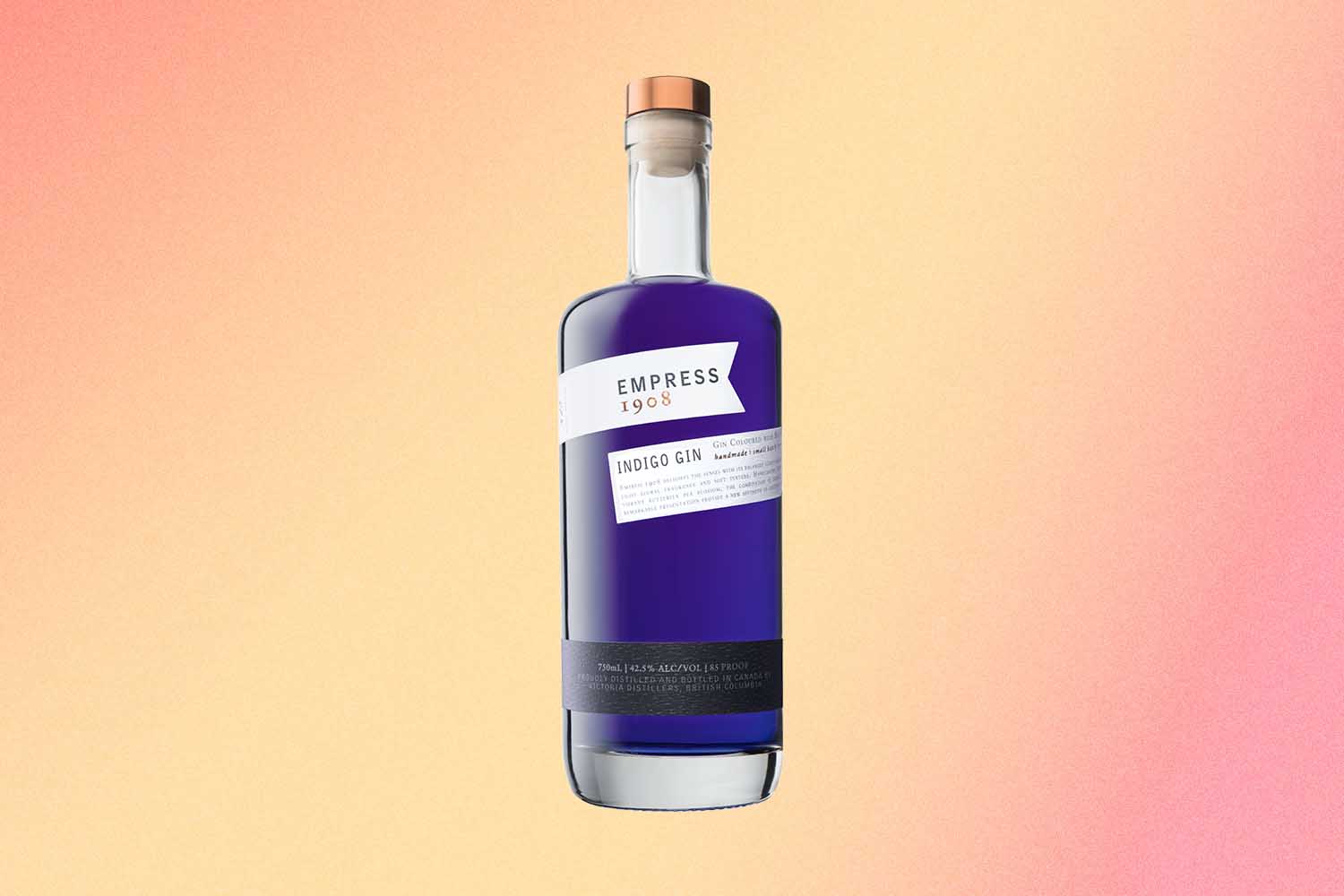
Empress 1908 Indigo Gin
The OG for BPF-infused spirits hails from Vancouver, British Columbia. With a softer “New American” character, it includes eight botanicals, with an emphasis on juniper, citrus and floral notes. The deep indigo color turns a soft, Instagram-worthy pink or fuchsia with the addition of citrus. The gin has “a balanced taste, delicate aroma and soft texture,” according to LeCours. And though it doesn’t change color, check out the new Empress 1908 Elderflower Rose Gin, which will imbue a marvelous ruby hue to your G&Ts.
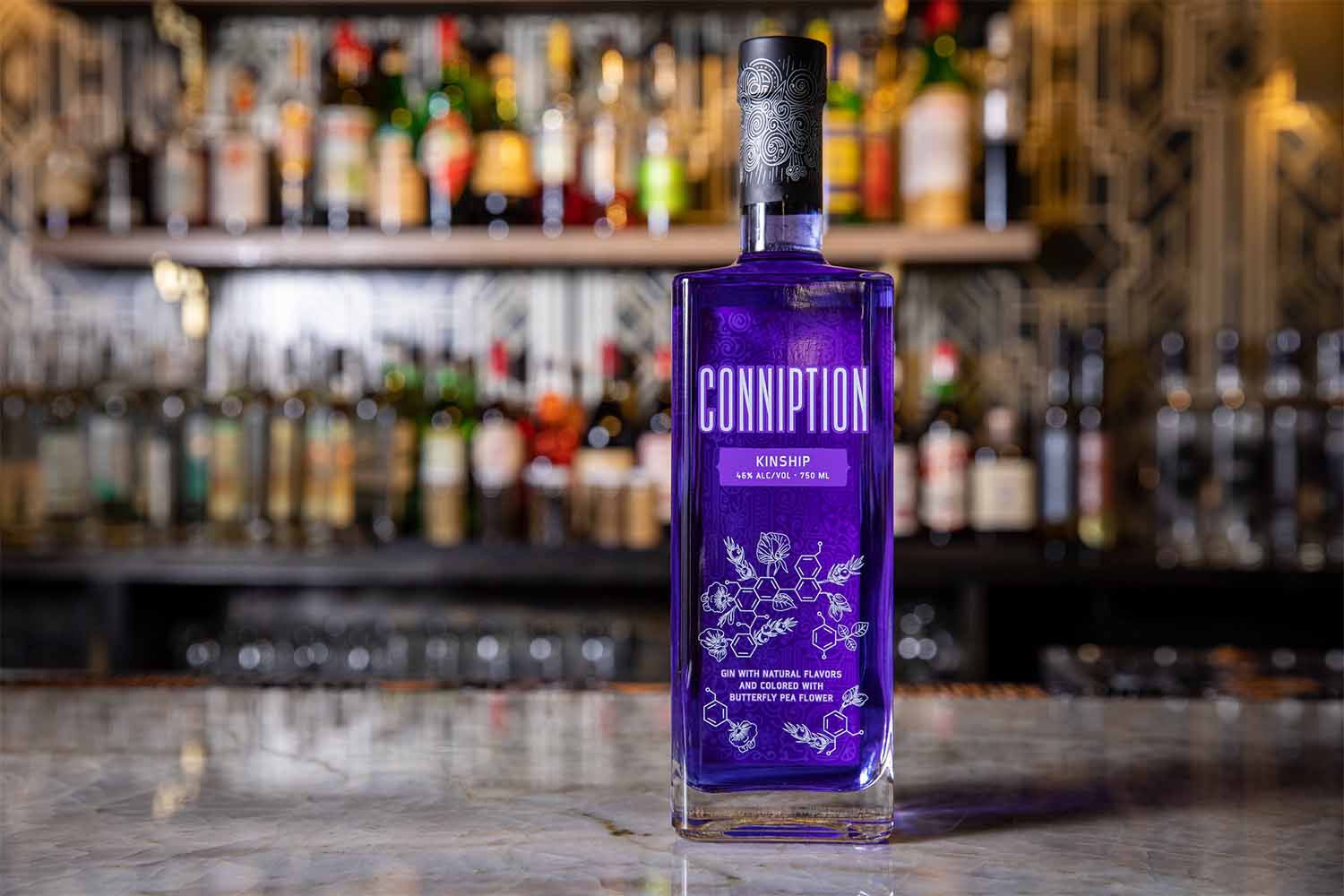
Conniption Kinship Gin
Conniption prides itself on blending modern technology and classic techniques to craft tasty spirits. Combining traditional pot still maceration and distillation (with cold distillation for more delicate botanicals) and infusions (for the BPF) provides the most intense and authentic flavor notes in a gin, according to Katrincic. “Conniption’s goal is to have the U.S. consumer fall in love with gin again,” she says. Kinship — launched in 2022 — highlights New American style botanicals with a deep purple color that swirls beautifully to pink with the stir of a bar spoon. The higher proof (46% ABV) means those bright botanicals stand up in even the most complex cocktails.
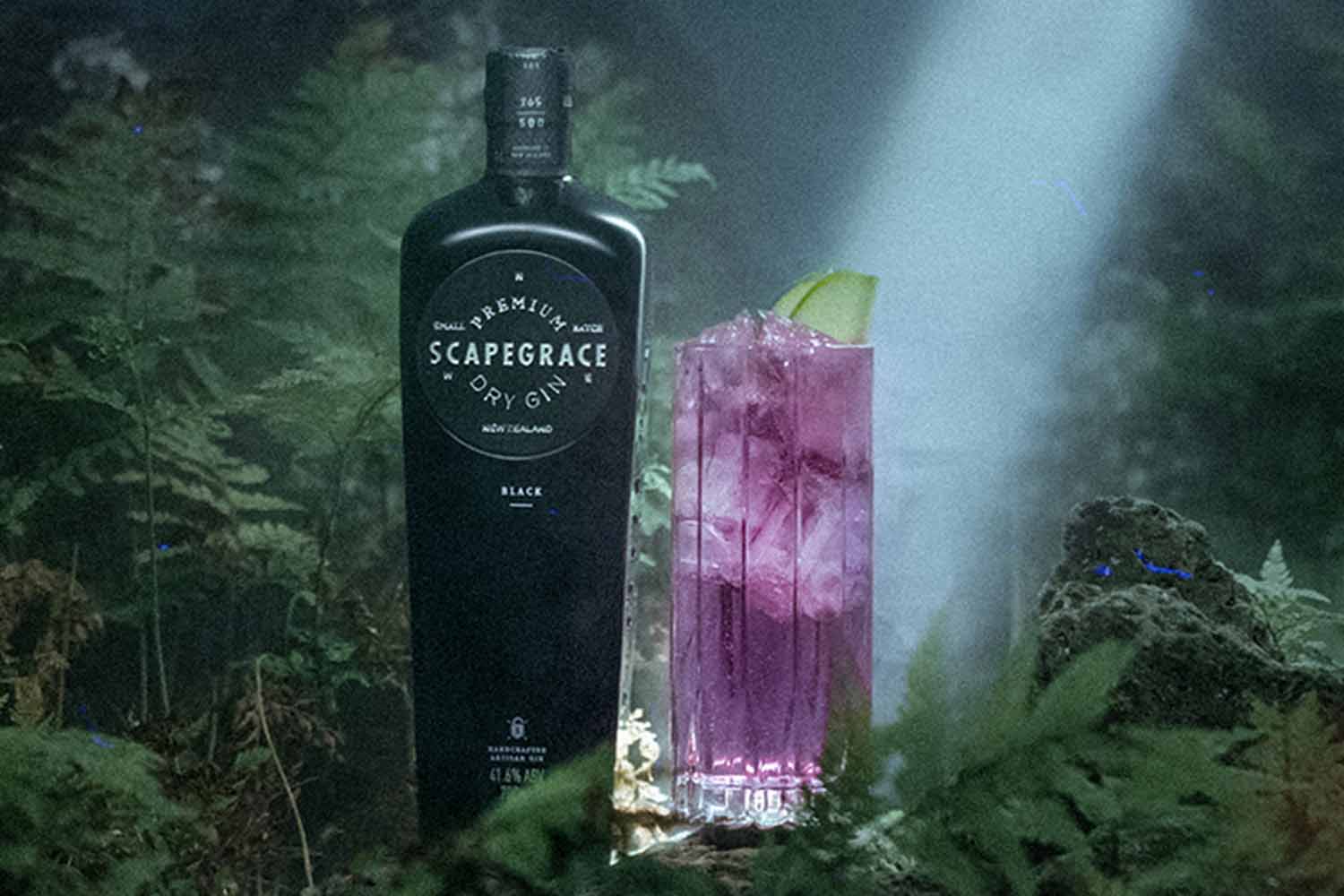
Scapegrace Black Gin
New Zealand’s Scapegrace Distillery kicked things off in 2014 with the rule-following goal of “breaking the rules.” Pretty quickly they did just that, introducing Scapegrace Black. The bottle is black, meaning you can’t see the spirit, which is also black, or very, very dark blue. It’s juniper-forward but includes a lot of regional botanicals like pineapple, saffron, aronia berries (which help create the black), sweet potato and, of course, BPF. So it tastes like gin but a bit funky and citrusy, and the bottle pays tribute to Genever, gin’s predecessor. Add tonic or citrus, and that impenetrable dark blue-black swirls like a Disney transformation into a luminous light purple.
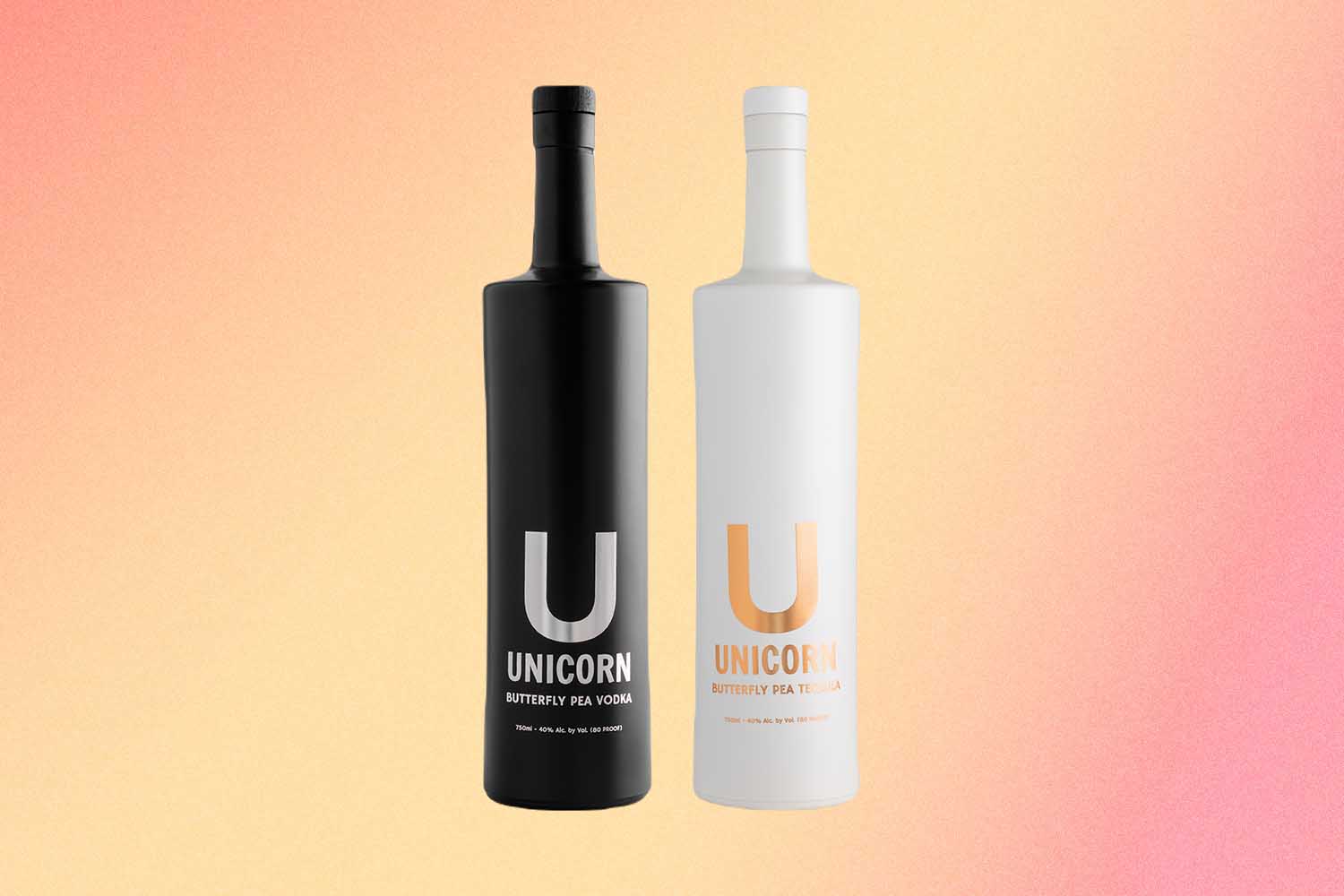
Unicorn Butterfly Pea Vodka and Tequila
“I chose vodka and tequila because that’s what I drink,” Hewitt says. It also lets the brand stand apart from all the gins. The Seattle-based company partners with existing spirits brands (Casa Maestri for the tequila) and works with them to craft pH-neutral versions of their spirits (distilled spirits, otherwise, are acidic and turn the BPF purple in the bottle). Unicorn, which only produces BPF-infused expressions, prides itself on its vibrant-blue booze that shift from purple to pink with acid or tonic water. Opaque bottles protect the contents from light. The results are softer aromatically than traditional tequila or vodka but taste just fine. “We don’t need to be the best tequila on the market, just the most fun,” Hewitt adds. A blanco rum should join the portfolio later this year.
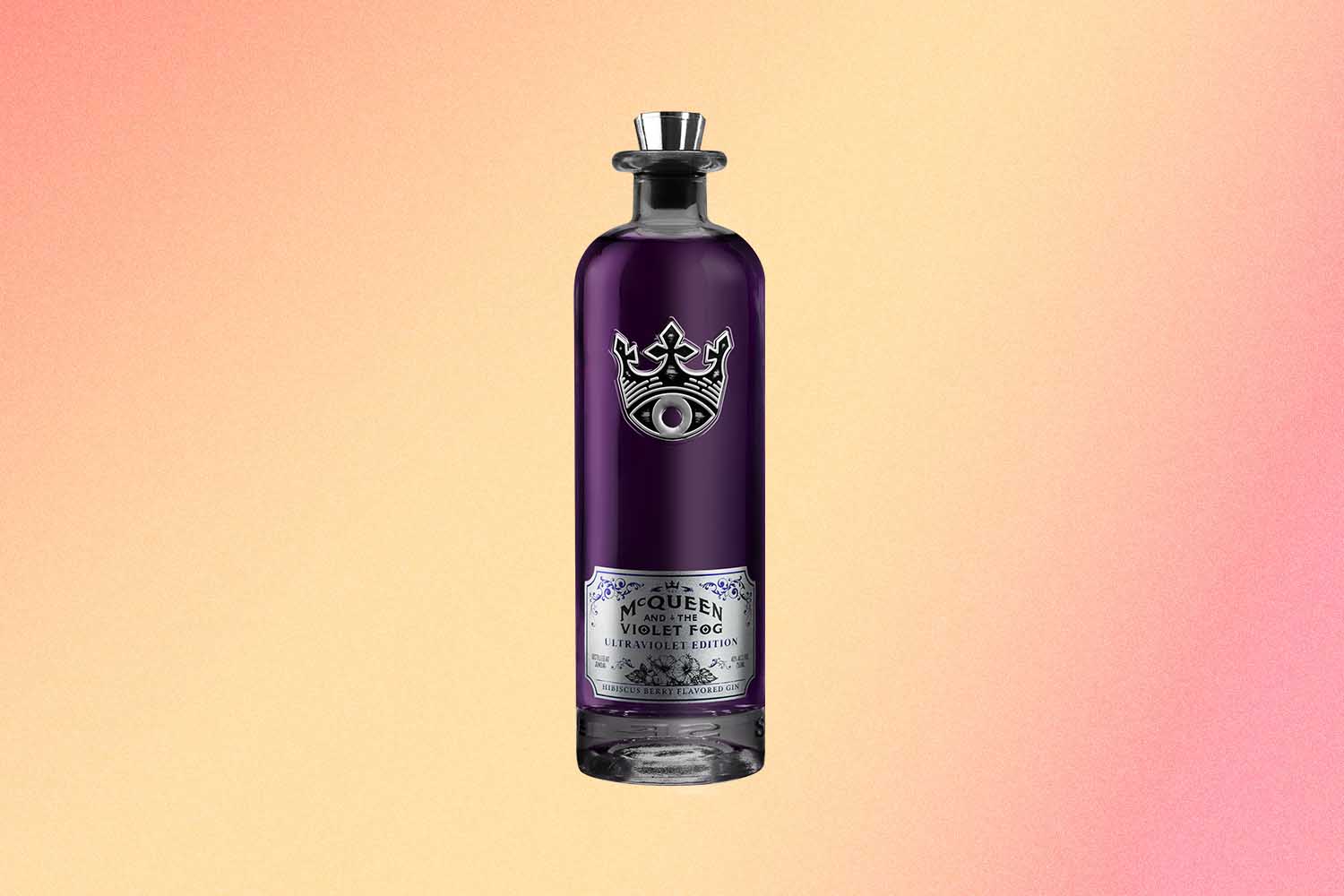
McQueen and the Violet Fog Ultraviolet Edition Gin
We’ve included this Brazilian gin because it’s not a color-changing gin, but it sure looks like one. The brand (Sovereign) is known for delicious, innovative gins in ornate bottles. Ultraviolet Edition has the Easter egg purple most BPF spirits boast, but that color derives from hibiscus berries and other innovative botanicals like pomelo, rose petal and rosemary. It has a hint of berry sweetness and is super tasty with a squeeze of lime juice, but it ain’t morphing into a pink drink.
Every Thursday, our resident experts see to it that you’re up to date on the latest from the world of drinks. Trend reports, bottle reviews, cocktail recipes and more. Sign up for THE SPILL now.
